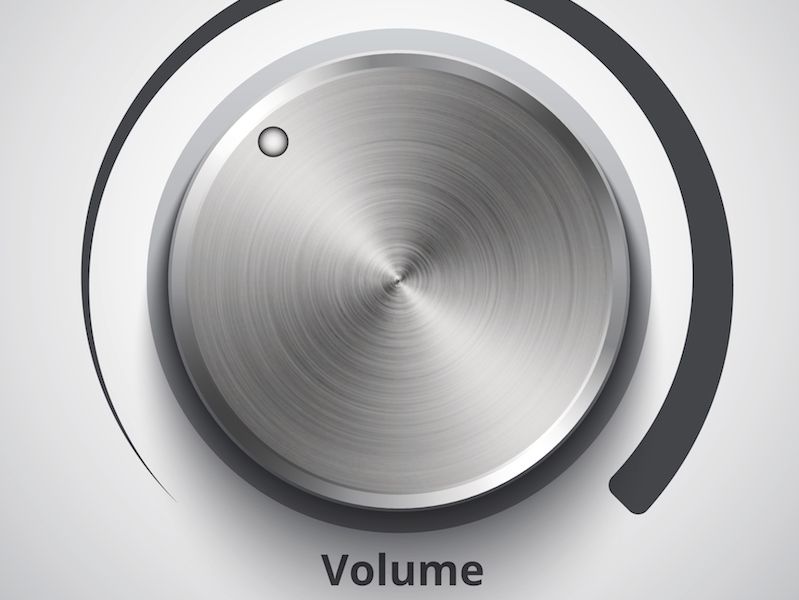
Have you ever noticed the “Beware of Sharks” sign when you go to the ocean? It’s not really a sign you disregard. You may even think twice about swimming at all with a sign like that (if the warning is written in big red letters that’s especially true). For some reason, though, it’s harder for people to pay attention to warnings about their hearing in the same way.
Current studies have found that millions of people disregard warning signs regarding their hearing (this research exclusively looked at populations in the United Kingdom, but there’s no doubt the concern is more global than that). Knowledge is a huge part of the problem. It’s rather instinctive to be fearful of sharks. But most individuals don’t have an overt fear of loud sounds. And the real question is, what’s too loud?
Loud And Hazardous Sound is Everywhere Around us
It’s not only the machine shop floor or rock concert that are dangerous to your ears (although both of those situations are, indeed, dangerous to your hearing). Many every-day sounds can be dangerous. That’s because exposure time is as dangerous as the volume. Your hearing can be harmed with even low level noises like dense city traffic if you’re exposed to it for more than two hours at a time.
keep reading to find out when sound gets too loud:
- 30 dB: This is the volume level you would expect of normal conversation. At this level, there won’t be any limit to how long you can confidently be exposed.
- 80 – 85 dB: This is the sound level of heavy traffic, a lawnmower, or an air conditioning unit. This volume will usually become harmful after two hours of exposure.
- 90 – 95 dB: Think of how loud a motorcycle is. 50 minutes is enough to be harmful at this level of sound.
- 100 dB: This is the amount of noise you might experience from a mid-size sports event or an oncoming subway train (depending on the city, of course). 15 minutes of exposure will be enough to be dangerous at this sound level.
- 110 dB: Have you ever cranked your Spotify music up to max volume? On most smartphones, that’s right around this volume. 5 minutes will be enough to be harmful at this volume.
- 120 dB and over: Anything over 120 dB (think loud rock concerts or exceptionally large sports events) can produce immediate damage and pain in your ears.
How Loud is 85 dB?
Generally, you should look at anything 85 dB or louder as putting your hearing in danger. But it can be difficult to know how loud 85 dB is and that’s the difficulty. It’s not tangible the way that a shark is tangible.
And hearing cautions commonly go ignored for this reason particularly when the sound environment isn’t loud enough to cause pain. There are a couple of possible solutions to this:
- Get an app: There isn’t an app that’s going to immediately protect your ears. But there are a number of free apps that can work as sound level monitors. Damage to your hearing can occur without you recognizing it because it’s hard to recognize just how loud 85 dB feels. The answer, then, is to have this app open and monitor the sound levels near you. Utilizing this strategy will make it more instinctual to distinguish when you are moving into the “danger zone”. (Or, the app will simply let you know when things get too loud).
- Adequate signage and training: This especially relates to workspaces. The real dangers of hearing loss can be reinforced by signage and training (and the benefits of protecting your hearing). Signage could also let you know just how noisy your workspace is. Helping employees recognize when hearing protection is suggested or necessary with appropriate training can be very useful.
When in Doubt: Protect
Apps and signage aren’t a foolproof answer. So make the effort to safeguard your hearing if you are in doubt. Over a long enough duration, noise damage will almost certainly create hearing problems. And these days, it’s never been easier to injure your ears (all you need to do is turn your headphone volume up a little too high).
If you’re listening to headphones all day, you should not raise the volume past the half way. If you keep turning it up to hear your music over background sound you should find different headphones that can block out noise.
That’s the reason why it’s more significant than ever to identify when the volume becomes too loud. Raising your own knowledge and awareness is the answer if you want to do that. Safeguarding your ears, wearing ear protection, or limiting your exposure, is pretty simple. That starts with a little knowledge of when you should do it.
That should be easier today, too. Particularly now that you know what to be aware of.
Think you might have hearing loss? Make an appointment.
